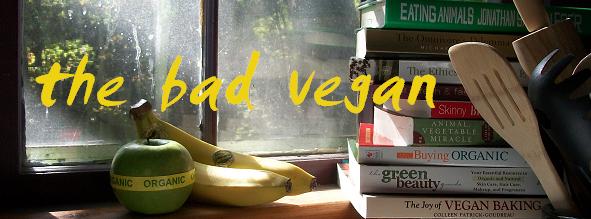
Millions of hens, or “layers” as the factory farming industry has re-named these animals to reflect the machine-like ill treatment they receive inside of CAFOs, are kept in confined spaces so small they cannot spread their wings, explore their surroundings, or comfortably lay down. Their genetics have been altered so that they continue to produce eggs on minimal food and water and when under maximum stress. CAFO operators create an artificial environment, including periods of starvation, that forces the hens to molt and lay more eggs, even when their bodies would not naturally do so. Their beaks, which are full of sensitive nerve endings, are regularly seared off without anesthetic and their feet grow around the wiring in their cages because of a lack of movement.
Even if you want to disregard the animal cruelty that goes into the carton of eggs you see on the grocery store shelf, the health concerns of consuming eggs cannot be ignored. One egg from a factory farm “layer” contains two thirds of the cholesterol recommended for our daily intake. Of course, we have to take into account the fact that nutritional recommendations come from the USDA, which is largely comprised of individuals who have a vested interest in the success of the beef, poultry, and dairy industries. Barbara Kingsolver argues that regular chickens, without genetic modifications, who are raised humanely on small farms in open pastures, given the freedom to behave as chickens do, and are fed sufficient amounts of healthy food produce eggs with a significantly lower level of cholesterol and the cholesterol they do contain is more “good cholesterol” than bad (1). This may very well be true. If you live in an area where you can access eggs like these (many of us probably do and can), perhaps this is not a bad choice. However, there are plenty of cholesterol free, hormone free, and animal free, alternatives to eggs.

For recipes like quiche or scrambles, firm or extra-firm tofu works very well. Adding turmeric and nutritional yeast can give the tofu a more egg-like appearance and flavor. I’ll be sure to include a really yummy tofu quiche recipe soon.

Ener-G Egg Replacer is a great option when baking from scratch. One Egg = 1 1/2 tsp Egg Replacer to 2 tbsp of water. Ener-G does not work for scrambles or in pasta dishes, although we have tried and tried. Stick to baking with Ener-G.

Applesauce or other pureed fruits also work well as an egg alternative when baking. One Egg = ¼ cup of applesauce.

Ground flax seed is a great alternative for baking when mixed with water. Plus, flax contains lots of Omega-3s and fiber. Some suggest that it even helps to reduce your risk for heart disease and diabetes. One Egg = one Tbsp ground flax + 3 Tbsp water.
The flax-water mixture works great as a binder in cookies. I adapted the following recipe from Colleen Patrick-Goudreau’s “The Joy of Vegan Baking.” My husband is a natural when it comes to baking and is convinced that dairy products are necessary when making biscuits, pie crusts, cakes, and cookies. When I first brought home “The Joy of Vegan Baking,” he gave me a look that said “vegan baking” is an oxymoron. We regularly make vegan recipes together for lunch and dinner, but when I started to become interested in baking vegan treats, he smiled and said “You should leave the baking around here to me.” Needless to say, we’ve discovered some wonderful recipes in this book that we both enjoy. He especially likes this one.

Oatmeal Cookies
2 Tbsp ground flaxseed
6 Tbsp water
1 cup Earth Balance non dairy butter
1 ½ cups firmly packed organic light brown sugar
¼ cup organic Turbinado sugar
2 tsp organic vanilla extract
1 cup organic unbleached all-purpose flower
¾ cup organic whole wheat flower
1 cup oat bran
¾ tsp baking soda
¾ tsp baking powder
¼ tsp salt
½ tsp organic cinnamon
½ tsp organic nutmeg
1 ½ cups rolled oats
1 cup organic raisins
½ cup organic walnuts

Although I have made the recipe true to the book before, in an effort to make a healthier cookie I substituted whole wheat flour, added more oat bran rather than oats for an increased amount of fiber, cut down on the salt, and added walnuts for the omega-3 fatty acids, protein, and fiber.
Preheat the oven to 350 degrees.
Whip together the flaxseed and water until the consistency is thick and creamy. I use an immersion blender, which makes this process quick and easy. Voila, a dairy free binder!
Mix together the Earth Balance, sugars, vanilla and the flaxseed mixture until well blended.
In a separate bowl, combine the flours, oat bran, baking soda, baking powder, salt, cinnamon and nutmeg.
Combine the wet and dry ingredients. Stir in oats, raisins, and walnuts.
Scoop the dough onto a non-stick cookie sheet into ½ inch think rounds.
Bake 15 minutes. Let the cookies firm up for a few minutes after removing them from the oven prior to transferring them to a wire cooling rack.

I’ve tried baking plenty of vegan treats, and many of them do have a “substitute” taste. However, these oatmeal cookies are just right. The recipe will make 3 dozen, so it’s an easy way to share a vegan treat with your non-vegan friends and family members. Sharing food with each other creates important social bonds and cultural traditions, which is part of the reason why many people find it so difficult to “give up” animal products. “What’s Thanksgiving without a turkey?” one might ask. Celebrating Thanksgiving without supporting an industry that is in the business of mass animal torture and wreaking havoc on the environment is thoughtful and important. Being able to incorporate vegan foods into events with non-vegans can help create new traditions and can open conversations about alternatives to eating meat. Try it!
1. “Animal, Vegetable, Miracle” Barbara Kingsolver


No comments:
Post a Comment